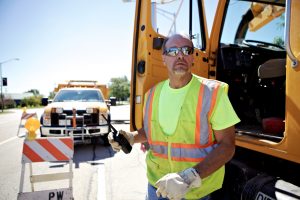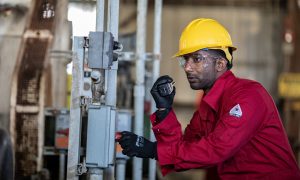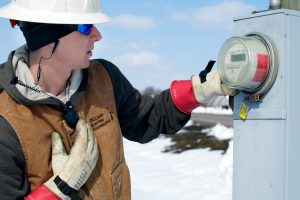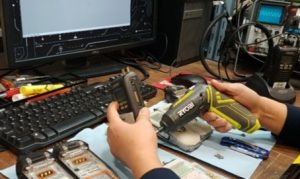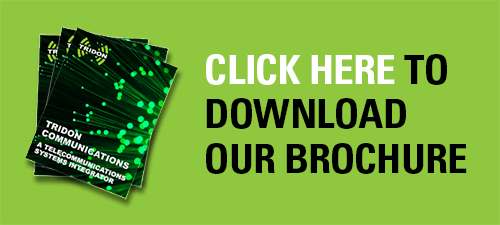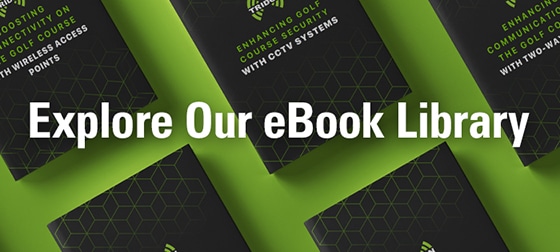Two-way radios can be relied on to provide loud and clear communication at the push of a button. That is one of the core reasons businesses all over Edmonton, the Oil Sands, and the Fort McMurray area turn to them time and again. Hold the Push-to-Talk button and you can transmit critical information to a team member or an entire group. Effective communication like this can go a long way towards boosting worker safety and productivity, and the features that come with modern two-way radios only add to the safety and productivity benefits the technology can provide.
That being said, there is a range of two-way radios on the market, from manufacturers like Motorola Solutions, Kenwood, and others besides them. The features and accessories that make up your radio solution will have an impact on the overall cost and just how well the equipment serves your operation.
So, before investing any money, invest some time and answer these questions. As always, you can Contact Us if you’re looking for more information.
Question 1: How Do My Employees Communicate Right Now?
Are they using landlines? Are they using smartphones to call or text? Are they only speaking face to face or is your facility using a Publica Address (PA) system to relay information? Effective as these methods can be for communication, two-way radios provide an ideal balance between reliable communication and worker productivity.
They can be programmed to allow one-to-one or one-to-many communication, and they can be paired with headsets to keep communications from distracting nearby workers. Radios equipped with speaker-mics mean your team members can communicate without putting down what they’re working on, and distracted driving laws still allow for two-way radios to be used by drivers.
Question 2: Is Anyone Else in My Industry Using Radios?
The short answer is ‘yes’. And, there’s a good chance that includes your direct competition.
Two-way radios are versatile and customizable. Add to that the fact that manufacturers like Kenwood and Motorola have a series tailored to virtually every industry.
Visit any major hotel in downtown Edmonton and you’ll likely see hospitality, custodial and security staff with radios on their hips and discreet lapel mics near their collars. Drive past any construction site anywhere in Alberta, and you can take it as given that the crew members are all carrying radios, as well. The same goes for the buses that transport workers to the Oil Sands and the teams working on a mine site. Rest assured that the staff working in warehouses and driving tractor-trailers in and around Fort McMurray are using two-way radios, too.
The intuitive operation and instant communication they can provide mean that two-way radios have penetrated nearly every industry.
Question 3: What Kind of Environment Does My Team Operate In?
Where you work will make a big difference in the type of radio your rent or buy and how much you end up spending. That said, you’re better off getting radios that are suited to where you work than you are saving a few bucks on cheap equipment. So, here are a few tips to get you going:
- If you work outdoors, in a wet and dusty environment, like a construction site you’ll want something with a high Ingress Protection (IP) Rating. IP ratings measure just how well protected your two-way radios are from water or dust entering the chassis. The higher the rating, the better the protection.
- If your team is working outdoors, VHF radios will give them better range and the ability to communicate across greater distances. However, you’ll sacrifice penetrating power, meaning signals will have a hard time getting through barriers like concrete and steel that are typical in modern construction projects.
- On the other hand, if your team is working indoors, UHF radios are a better bet. They may not have the range of their VHF counterparts, but they have the penetrating power you need for in-building communications.
- If you work in an environment that is deemed hazardous, like a refinery, lumber mill, or even a grain silo, you could end up needing intrinsically safe two-way radios and accessories so your team can communicate safely.
Getting the radio that’s right for your environment means your team will be able to communicate easily. So, if you have questions about which radio is best for your job site or facility, Contact Us . We’ll get you the answers you need.
Question 4: What Kind of Features and Accessories Will My Team Need?
It all depends on the kind of job they’re doing. But you’ll have a range of accessory options that will make communicating on the job easier:
- Speaker mics will allow your team to communicate with their two-way radios without stopping to remove them from a hip-mounted holster. This is especially useful when they’re working on a task that requires their full attention.
- Heavy-duty headsets provide a considerable amount of hearing protection for people working in noisy environments (factories, refineries, etc.) and the ability to communicate hands-free.
- Lapel-mics and discreet earpieces are great for security and hospitality staff. They allow for staff to transmit and receive loud and clear messages without interrupting guests or drawing attention.
Manufacturers like Kenwood and Motorola have also created a slew of features designed to keep workers safe and communications secure. Here are a few of them:
- Lone Worker: This safety feature is designed for people working in isolation for long periods of time. When programmed correctly, the Lone Worker has to push a button to send an ‘All Clear’ message to other team members. Should too long a time pass without that message being sent, an alert will go out and the team can make sure the colleague working on their own is safe and unharmed and send help if needed.
- Radio Stun: If your radio is lost or stolen, the Radio Stun feature will allow you to remotely disable it. That means whoever has it won’t be able to listen in or interfere with your team’s communications.
Just like two-way radios, the accessories and features you end up going with will depend on the type of job your team does. While cutting corners to save money will lead to frustration down the road, there’s no sense buying add-ons your team will never need.
So, talk to your provider. Let them know where your team will be working and what you need the radios to be capable of. If you’re ready to get started, Contact Us and we’ll get to work on your solution.
Question 5: What’s Does My Maintenance Plan Look Like?
Professional two-way radios are designed to be durable. They can handle a hard fall from height, they can get wet or dirty, some can even be fully immersed in water and still perform within specifications when you pull it out. But, like any piece of equipment, it still needs regular maintenance.
Auto-tuning, firmware updates, and antenna replacement are a few regular maintenance practices that can ensure you get the best possible performance out of your two-way radios. Even basic maintenance like cleaning your radios will help you transmit and receive loud and clear audio.
When choosing your two-way radios, make sure you have a plan to maintain them, just like you would for a forklift, a fleet vehicle, or a piece of critical equipment. Following through on this plan will keep your radios in good condition, meaning your team will be able to rely on them in the field.
If a maintenance plan isn’t in your budget, you may want to rent two-way radios, instead. The cost of maintenance is already included, and your radio dealer will have their own maintenance plan in place. Talk to your provider so you can build a solution that’s right for you.
Getting Started
Two-way radios are a powerful communications tool, no question. And, answering these questions will guide your decision, helping you choose the right gear the first time. If you run into any hurdles, just Contact Us. Our Client Support Specialists are here to help.
Tridon is a full solution Telecom Systems Integrator with CSA certification and licensed by APEGA. Our Engineering, Service and Tower Divisions collaborate with customers to build engineered solutions including communications systems design, tower inspections, and co-location, wireless broadband, fiber optic cabling, site security, and two-way radio communication.


